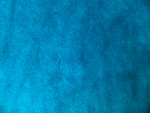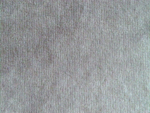|
Velour Fabric – The Plush Pile Fabric
Velour fabric is soft to the touch, and plush. Velour fabric is usually made from cotton, but is also made from synthetics such as polyester. Velour can be a knit fabric which gives it stretch or it can be a woven fabric without stretch.


Fabric Characteristics (Stretch Velour):
• Has a nap • Is bulky • Always shrinks and shrinkage may be more than 10% • Creeps badly when stitched right sides together • Has variable stretch, some stretching more in the length then width, some stretch in both directions • Raw edges frequently curl badly • May get caught in the presser foot • Pills and snags easily • Buttonholes may stretch out of shape • Dulls needles quickly
Working With These Fabrics Requires:
• Sewing machine needles recommended are sizes 70/10-90/14 universal, twin and stretch needles • Sewing machine settings recommended are a stitch length of 2.5mm • Sewing machine feet recommended are the wide straight stitch and the walking foot • Thread recommended is all-purpose polyester and cotton/polyester blend • Tools and equipment recommended are sharp scissors, sharp shears, rotary cutter and mat, pins • Layout recommended is nap, double layer, wrong sides together or single layer wrong side up • Marking tools recommended are air or water soluble marking pens, Clo Chalk, clips in seam allowance • Seams recommended are plain, stretch, double-ply, to name a few • Hems recommended are machine blindstitch, stretch, zigzag blindstitch or hand catchstitch to name a few • Edge finishes recommended are self-fabric facings, lining facings, bands, false bands, elastic casings and bindings • Seam and hem finishes recommended are serged, zigzag and multi-zigzag • Interfacings recommended are rarely used, but when used should be fusible tricot or French fuse • Linings and underlinings are rarely used
Fabric Characteristics (Woven Velour):
• Is easy to sew • Is used for casual garments • Has a pile and may require a nap layout • Usually requires extra fabric • Some velours are bulky • Velour puckers and creeps when stitched • Sheds • Shrinks and should be washed before cutting
Working With These Fabrics Requires:
• Sewing machine needles recommended are sizes 70/10-100/16 sharp or universal • Hand sewing needles should be sizes 5-9 • Sewing machine settings recommended is a stitch length of 2-3 mm • Thread should be all-purpose cotton, polyester, and cotton/polyester blend • Tools and equipment recommended are sharp scissors, sharp shears, rotary cutter and mat, pins • Layout recommended is nap, double layer, wrong sides together • Marking tools recommended are clips and temporary marking pens • Seams recommended are plain, double-ply, welt and topstitch to name a few • Hems recommended are plain and machine blindstitch to name a few • Hem and seam finishes recommended are single or double-ply, double-stitch, zigzag, multi-stitch zigzag and serged to name a few • Edge finishes recommended are smooth fabric facings, decorative facings, bindings, ribbings, casings, and bands • Closures recommended are buttons and machine buttonholes, loops, zippers, toggles and ties • Pockets recommended are inseams and patch pockets • Interfacing and linings are rarely used
These Fabrics Are Suitable For:
Velour fabric is used for casual garments such as t-tops, slacks, shorts, beach and pool cover-ups, bathrobes, caftans, pull-on pants, robes, and no iron tablecloths.
For information about the notions, tools, and equipment required to complete a sewing project, click here to view the sewing notions home page
For more information about this family of fabrics some great references are: Claire Shaeffer’s Fabric Sewing Guide
More Fabric Savvy by Sandra Betzina
All About Cotton – Julie Parker’s Fabric Reference Series
For more interesting information about velour fabric click here on Wikipedia.org
and click here on fabrics-manufacturers.com
To continue exploring information about fabrics follow the links below.
Velvet Fabric
|




